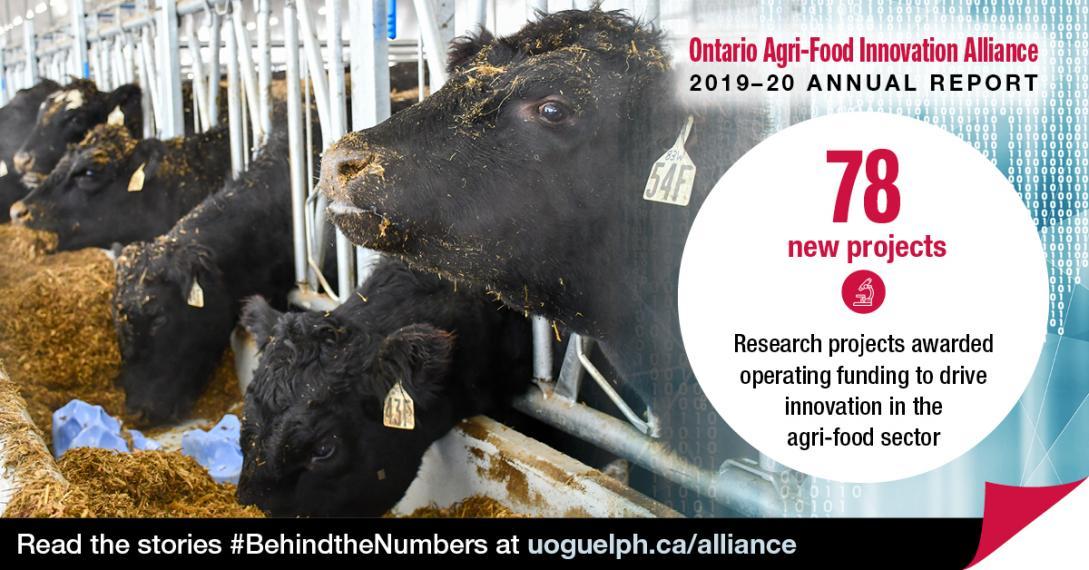#BehindtheNumbers: Alliance-funded research contributes to new on-farm pain management protocol to improve calf welfare

Dairy calves are an integral part of Ontario’s $2.2-billion dairy industry. Access to a world-class research and innovation system — including the Ontario Dairy Research Centre and six Alliance-funded projects over 18 years — resulted in better on-farm pain management practices during disbudding (the process of removing the horn bud in young calves for the safety of other cows and farm staff) and the licensing of a new pain management drug in Europe and Canada. Long-term Alliance investment helped identify and promote the new pain management protocol. Here’s how this research has made an impact on Ontario farms.
More producers and vets use a nerve block (e.g, Lidocaine) during disbudding
- Producers: from 22 per cent in 2004 to 62 per cent in 2014
- Vets: from 92 per cent in 2004 to 97 per cent in 2014
More producers and vets use NSAID pain control post-disbudding
- Producers: from 0 per cent in 2004 to 24 per cent in 2014
- Vets: From 2 per cent in 2004 to 48 per cent in 2014
New two-part pain management best practice
- Required on all Canadian dairy farms via a national dairy standard called proAction®
New U of G online training module teaches students and producers how to use new pain management protocol
- 150 veterinary students and 43 dairy producers have completed the online training
NSAID meloxicam licensed in Canada and Europe for use in calves thanks to Alliance-funded research
#BehindtheNumbers is a series of stories from the Ontario Agri-Food Innovation Alliance 2019-20 Annual Report, Growing Ontario Solutions, that showcases how the Alliance drives impact in Ontario.